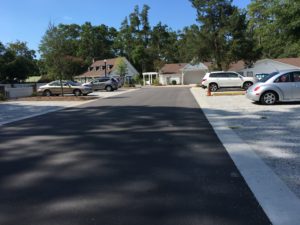We have been vacationing in Pawleys Island, SC for more than 30 years and have seen the area go through many changes including hurricane devastation, restoration and rapid growth. Pawleys is in an area called the Low Country – it is literally low in the water. And water is everywhere in the form of oceans, bays, marshy creeks, rivers and creeks. With seeming disregard to sustainable practices, development has brought with it an enormous amount of impervious surface – big box stores, parking lots and enlarged/improved roadways and it has prompted a niggling worry about where the water will go in the next big storm.
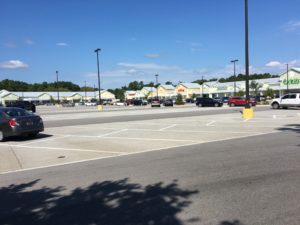 That is until this year when I drove into the Publix parking lot at Pawleys Island Plaza (The Shopping Center Group is the developer) and stopped short at the sight of a beautifully paved surface that included hard surfaced drive paths complemented by pervious or porous surface parking areas. Our daughter thought I was crazy when I jumped out and started taking photos of the beautifully designed and installed lot. It struck me that I had never seen the design before and how easy it would be to adopt anywhere.
That is until this year when I drove into the Publix parking lot at Pawleys Island Plaza (The Shopping Center Group is the developer) and stopped short at the sight of a beautifully paved surface that included hard surfaced drive paths complemented by pervious or porous surface parking areas. Our daughter thought I was crazy when I jumped out and started taking photos of the beautifully designed and installed lot. It struck me that I had never seen the design before and how easy it would be to adopt anywhere.
The next day I rode my bicycle over to the Publix lot and took some more photos 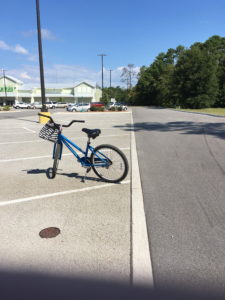 and noticed the limited number of storm drains that were needed to meet the
and noticed the limited number of storm drains that were needed to meet the 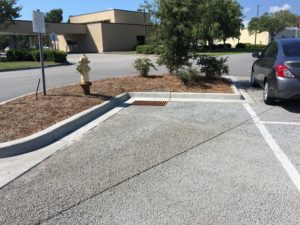 drainage needs. On the bicycle ride I noted that this design
drainage needs. On the bicycle ride I noted that this design
technique was being copied in various lots around the area. Most surprising to me was in The Hammock Shops. There they used crushed shells as the porous surface. Next door to them the developer used crushed stones.
Hurricane Matthew hit the area this year. A Category 4 storm, Matthew brought with it tremendous amounts of rain, wind and tidal flooding. The barrier island suffered and many areas flooded but Publix reports that it survived the storm well. Whether that is because of the parking lot design or not is an open question but providing for the maximum amount of infiltration can only help.
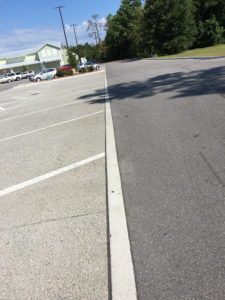 Often I hear from designers and clients that they can’t use porous pavement because it is not as sturdy as standard pavement and requires maintenance. I think that the design solution that is being put into practice in Pawleys Island is a good model – use a standard, tough and resilient material for the drive path, provide an edge curb to separate it from the parking areas and then pave the parking areas with porous pavement. In essence you create a HUGE storm drain for infiltration into the ground.
Often I hear from designers and clients that they can’t use porous pavement because it is not as sturdy as standard pavement and requires maintenance. I think that the design solution that is being put into practice in Pawleys Island is a good model – use a standard, tough and resilient material for the drive path, provide an edge curb to separate it from the parking areas and then pave the parking areas with porous pavement. In essence you create a HUGE storm drain for infiltration into the ground.
I think this would be a great model for all cities to use on their back and side streets and parking lots to reduce the pressure on combined sewer systems and to recharge groundwater.
If you would like to learn more about porous pavement and applications for its use, in its Stormwater Management Guidance Manual, the Philadelphia Water Department outlines methods for meeting the department’s Stormwater Regulations; Chapter 4 delves into applications for porous pavement.
Looking at the Publix lot also gave me big ideas for our little city parking pad. Why not leave the existing concrete on either side but rip up the center parking area and install porous pavement or pavers in that area. It could be very pretty, it would allow water recharge to our small orchard, and it would support the goals of the PHS / PWD Raincheck program; the program might even be able to defray some of the costs!
